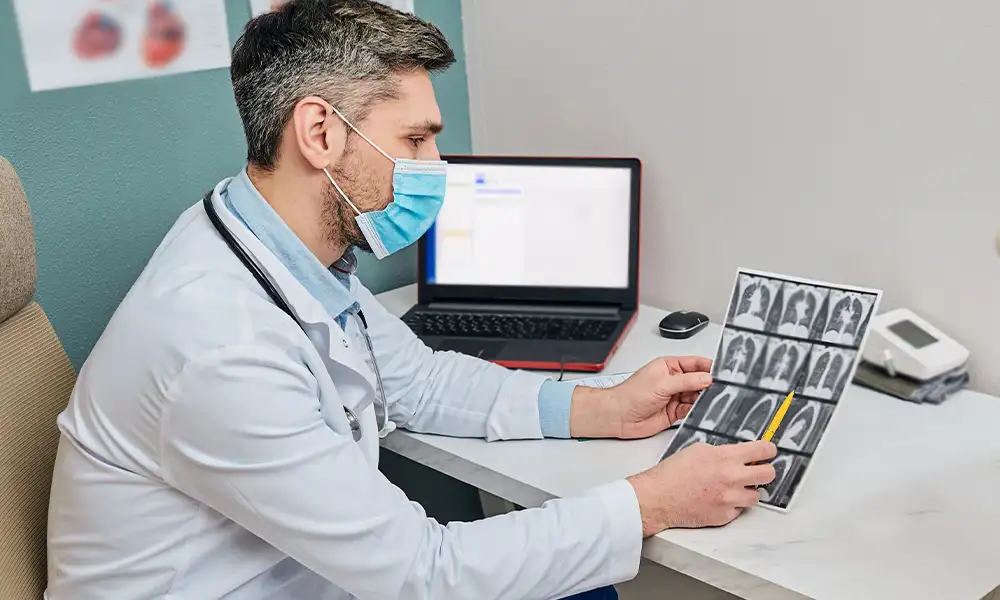Hb Reims: A Rare Hemoglobin Variant - A Case Report
- April 15,2022
- 2 Min Read

Two brothers – S1 (44 years) and S2 (39 years) were referred for hemoglobinopathy screening since their father was diagnosed to have “thalassemia”.
They were born of a non-consanguineous marriage and had no relevant positive history.
A complete blood count was performed on a Yumizen H2500 (Horiba) and hemoglobin analysis was performed on the Variant II HPLC system (BioRad). The findings are listed below:
Both the brothers, S1 and S2, presented with microcytosis, hypochromasia and thalassemic red cell indices WITHOUT anemia (see above table).
Alpha and beta-globin gene mutation analysis was performed by direct DNA sequencing of the patient’s DNA on the 3730 XL genetic analyser (Applied Biosystems)*. The results were:
- S1: Heterozygous for Hb Reims with single alpha-globin gene deletion (-𝛼³·⁷/𝛼𝛼)
- S2: Compound Heterozygous for beta-thalassemia and Hb Reims and single alpha-globin gene deletion (-𝛼³·⁷/𝛼𝛼)
So, what is Hb Reims?
- Hb Reims is a rare alpha-globin chain variant [alpha1: Codon 23 GAG>GGG (Glu>Gly)] that elutes in the HbS window (4.30 - 4.70 mins) in HPLC.
- It was first reported in 1989 in a 60 year old French-Caucasian woman. No other case reported subsequently in world literature.
- Our cases are the first to be reported from India.
Hb Reims levels were significantly lower (13.8%) in S2 who had coexisting beta-thalassemia traits as compared with 21.7 % in S1. The role of concomitant beta-thalassemia in lowering the level of Hb Reims (an alpha chain variant) is a strong possibility in S2. This indicates a preferential formation of HbA over Hb Reims in conditions of relative beta-globin chain deficiency such as beta-thalassemia. This also suggests that the rate of assembly of monomers to form dimers or tetramers can be an important mechanism of controlling the quantity of certain hemoglobin variants with critical substitutions in heterozygotes.
Take Home Message:
- It is important to differentiate a pathogenic Hb variant from a non-pathogenic one.
- HPLC retention time alone cannot be used as a diagnostic tool for the identification of Hb variants, it is only a presumptive one. A step-wise approach is necessary for the diagnosis of these cases.
- A simple test such as sickling test can differentiate non-HbS variants eluting in S-window from HbS.
- Globin gene sequencing is required for the definite identification of Hb variants.
- Hb variants in combination with other common hemoglobinopathies, such as beta-thalassemia, represent a public health problem since the clinical severity of such compound heterozygous states is more. An accurate diagnosis can help the individual and their family in genetic counseling.
The CoE of Hematology at Suburban Diagnostics is fully equipped with the latest cutting edge technologies and with Hematopathologists of the highest calibre.
(*We would like to acknowledge the help from the National Institute of Immunohematology (ICMR) for molecular analysis of the cases described here.)
Want to book a test? Fill up the details & get a callback
Most Viewed
Premarital Health Screening
- 20 Min Read
Typhoid - Signs and Symptoms
- 3 Min Read
Home Isolation Guidelines - Covid-19 Care
- 5 Min Read














